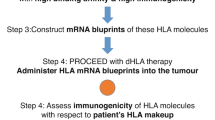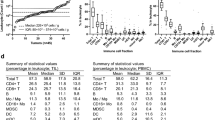Abstract
The specificity of the tube LAI in breast cancer was examined in a study with coded samples of PBL. In addition, 64 patients with breast cancer had their LAI reactivity monitored and correlated with their clinical status for up to 3 years after mastectomy. When patients were assayed by tube LAI, 83, 72, and 29% with Stage I, and II and III breast cancer respectively were positive. In Stage IV brest cancer, 88% of those with local recurrence and 15% of those with disseminated cancer were positive. By contrast, 3% of control subjects were LAI+. A select group of patients admitted to hospital with suspicious breast lumps that histopathologically proved to be benign breast disease (BBD) had a higher incidence of LAI+ (12%), whereas of outpatients with BBD only 2% were LAI+. Most breast cancer patients LAI reactivity became negative 2--4 months after mastectomy, even when some harboured micrometastases. LAI reactivity remained absent in those patients who remained clinically "cancer-free". In the follow-up patients, LAI activity returned about 4 months before local recurrence. LAI reactivity was observed in 7/8 patients in the coded study and 14/15 patients in the follow-up study preceding and/or at the time of local recurrence. A few patients (15%) progressed to widespread cancer without preceding positive LAI activity. The results suggest that tumour-specific immunity rapidly fades after surgery and may play no role in the rejection of micrometastases by 6 months after surgery. In addition, the present study has shown that the human hose manifests tumour-specific immunity when the cancer is small, and suggests that the early detection of human cancer would depend upon reliable methods to measure the tumour-specific immune response.
This is a preview of subscription content, access via your institution
Access options
Subscribe to this journal
Receive 24 print issues and online access
$259.00 per year
only $10.79 per issue
Buy this article
- Purchase on Springer Link
- Instant access to full article PDF
Prices may be subject to local taxes which are calculated during checkout
Similar content being viewed by others
Rights and permissions
About this article
Cite this article
Lopez, M., O'Connor, R., MacFarlane, J. et al. The natural history of antitumour immunity in human breast cancer assayed by tube leucocyte adherence inhibition. Br J Cancer 38, 660–673 (1978). https://doi.org/10.1038/bjc.1978.271
Issue Date:
DOI: https://doi.org/10.1038/bjc.1978.271



